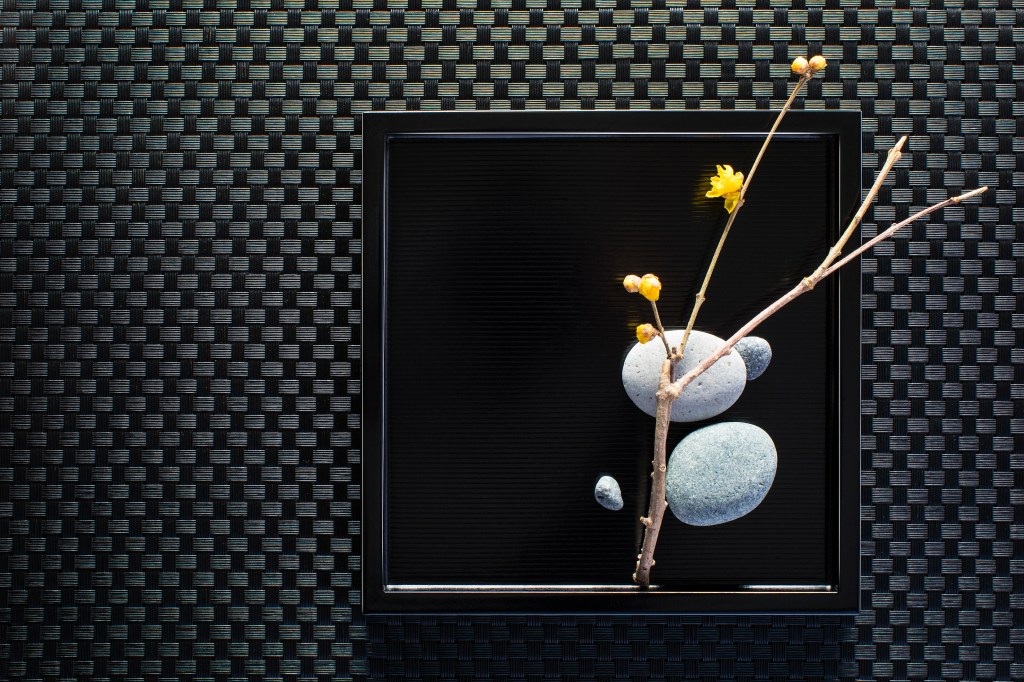How To Find Happiness Living a Perfectly Imperfect Life

As we search for new ways to approach life’s challenges and seek meaning beyond materialism, we’re increasingly looking to ancient wisdom for guidance.
Wabi sabi (“wah-bi sah-bi”) is a captivating concept from Japanese aesthetics, which helps us to see beauty in imperfection, appreciate simplicity and accept the transient nature of all things. A refreshing antidote to our fast-paced, consumption-driven world, wabi sabi will encourage you to slow down, reconnect with nature, and be gentler on yourself. It will help you simplify everything, and concentrate on what really matters. From honouring the rhythm of the seasons to creating a welcoming home, from reframing failure to ageing with grace, wabi sabi will teach you to find more joy and inspiration throughout your perfectly imperfect life.
The origins of wabi
The word wabi means ‘subdued taste’. It originally had linguistic connections to poverty, insufficiency and despair. As an aesthetic term, the beauty of wabi is in its underlying tone of darkness. It is sublime beauty in among the harsh realities of life. As Buddhist priest Kenko wrote, seven centuries ago, ‘Should we look at the spring blossoms only in full flower, or the moon only when cloudless and clear?’ Beauty is not only evident in the joyous, the loud or the obvious.
Wabi implies a stillness, with an air of rising above the mundane. It is an acceptance of reality, and the insight that comes with that. It allows us to realise that whatever our situation, there is beauty hiding somewhere. Wabi can describe the feeling generated by recognising the beauty found in simplicity. It is a sense of quiet contentment found away from the trappings of a materialistic world.
Ultimately, wabi is a mindset that appreciates humility, simplicity and frugality as routes to tranquillity and contentment. The spirit of wabi is deeply connected to the idea of accepting that our true needs are simple, and of being humble and grateful for the beauty that already exists right where we are.
The origins of sabi
The word sabi means ‘patina, antique look, elegant simplicity or tranquility’. The essence of sabi permeated much of Matsuo Basho’s haiku, penned in the seventeenth century and still loved all over the world for its haunting beauty. Over time, the word sabi has come to communicate a deep and tranquil beauty that emerges with the passage of time. Visually, we recognise this as the patina of age, weathering, tarnishing and signs of antiquity.
Sabi is a condition created by time, not the human hand, although it often emerges on quality objects that were originally crafted with care. It is interested in the refined elegance of age. It is beauty revealed in the processes of use and decay, such as the dull shine in the worn grain of a well-loved farmhouse kitchen table.
In his thought-provoking classic, In Praise of Shadows, celebrated author Jun’ichiro Tanizaki noted how Japanese people find beauty in sabi saying: We do not dislike everything that shines, but we do prefer a pensive lustre to a shallow brilliance, a murky light that, whether in a stone or an artefact, bespeaks a sheen of antiquity . . . We do love things that bear the marks of grime, soot, and weather, and we love the colours and the sheen that call to mind the past that made them.
Although sabi is concerned with how the passage of time manifests itself physically in objects, as with so much of Japanese aesthetics, its deeper meaning hints at what is hidden beneath the surface of the actual item that we see. It is a representation of the way all things evolve and perish and can evoke an emotional response in us, often tinged with sadness, as we reflect on the evanescence of life. Sabi beauty reminds us of our own connection with the past, of the natural cycle of life and of our very own mortality.
The birth of wabi sabi
It is a wabi heart that recognises sabi beauty, and the two have gone hand in hand for many generations. The essence of their teaching stretches back through the centuries, but the conjoined term wabi sabi has only emerged as a recognised term within the past hundred years or so, ‘as a result of a desire to understand what lies beneath the psychology of Japanese people’. A label was needed for what people had always known.
Wabi sabi simultaneously lives on the edge of people’s consciousness and deep in their hearts. My friend Setsuko, now in her seventies, said she had never uttered wabi sabi out loud until I asked her about it, even though it is part of the essence of who she is, and she has an immediate sense of what it means to her.
Wabi sabi goes beyond the beauty of any given object or environment, to refer to one’s response to that profound beauty. Wabi sabi is a feeling, and it is intangible. One person’s wabi sabi is not the same as another’s, because each of us experiences the world in different ways. We feel wabi sabi when we come into contact with the essence of authentic beauty – the kind that is unpretentious, imperfect and all the better for that. This feeling is prompted by a natural beauty, that which is austere and unadorned.
The closest term we have for this response in the English language is ‘aesthetic arrest’, as hinted at by James Joyce in his novel A Portrait of the Artist as a Young Man Joyce wrote: The instant wherein that supreme quality of beauty, the clear radiance of the esthetic image, is apprehended luminously by the mind which has been arrested by its wholeness and fascinated by its harmony is the luminous silent stasis of esthetic pleasure, a spiritual state very like to that cardiac condition which the Italian physiologist Luigi Galvani . . . called the enchantment of the heart.
But even this is just talking about the physical response, and not the deeper philosophy of wabi sabi, which relates to the nature of life itself.
Life lessons inspired by wabi sabi
Wabi sabi is deeply connected to the kind of beauty which reminds us of the transient nature of life. The life lessons wabi sabi can teach us are rooted in the following ideas:
- – The world looks very different when you learn to see and experience it from your heart.
-
-
- – All things, including life itself, are impermanent, incomplete and imperfect. Therefore, perfection is impossible, and imperfection is the natural state of everything, including ourselves.
-
- – There is great beauty, value and comfort to be found in simplicity.
Still, wabi sabi is not a panacea. It’s a reminder that stillness, simplicity and beauty can help us fully inhabit a moment in the middle of anything, and that’s a lesson for all of us.
If you want to find out more about applying the principles of wabi sabi to transform every area of your life, and finding happiness right where you are you can read Beth’s book
**Order Beth Kempton's new book KOKORO: Japanese Wisdom for a Life Well Lived**
'A truly transformative read' Sunday Times STYLE
'More than ever, we need books like this' Jessica Seaton, Co-Founder of Toast and author of Gather, Cook, Feast
A whole new way of looking at the world - and your life - inspired by centuries-old Japanese wisdom.
Wabi sabi ("wah-bi sah-bi") is a captivating concept from Japanese aesthetics, which helps us to see beauty in imperfection, appreciate simplicity and accept the transient nature of all things. With roots in zen and the way of tea, the timeless wisdom of wabi sabi is more relevant than ever for modern life, as we search for new ways to approach life's challenges and seek meaning beyond materialism.
Wabi sabi is a refreshing antidote to our fast-paced, consumption-driven world, which will encourage you to slow down, reconnect with nature, and be gentler on yourself. It will help you simplify everything, and concentrate on what really matters.
From honouring the rhythm of the seasons to creating a welcoming home, from reframing failure to ageing with grace, wabi sabi will teach you to find more joy and inspiration throughout your perfectly imperfect life.
This book is the definitive guide to applying the principles of wabi sabi to transform every area of your life, and finding happiness right where you are.









